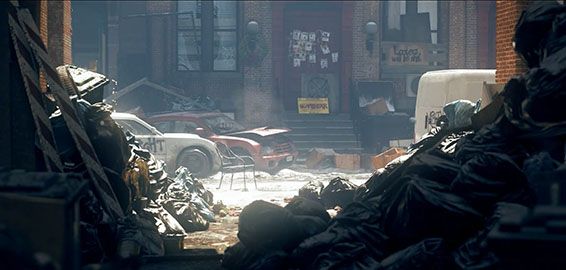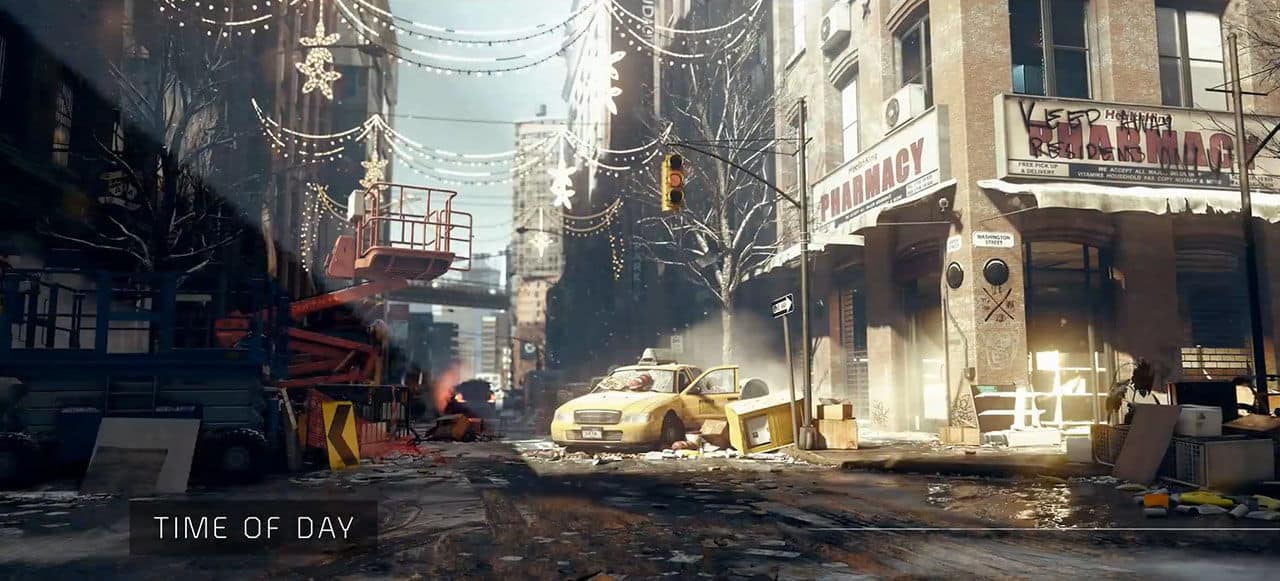We live in a fragile world… the Snowdrop engine makes this world a reality.
Actually… I’m pretty sure we’re fucking things up just fine on our own. Having said that, I do agree that the Snowdrop engine – the fancy graphics engine that powers Tom Clancy’s The Division – is stunning to behold. Here are a few of the effects it’s capable of churning out…
- Dynamic day night cycle
- Volumetric lighting
- Dynamic global illumination
- Procedural destruction
- Advanced particle system, reacts dynamically to environment and light
- Dynamic material shaders that change with the weather
These all sound great, but I promise you that they look even better.

Though I’m impressed with what I see (especially with the dynamic material shaders), I’m also skeptical. Given that The Division is still a ways out from release, I can’t help but wonder how much they’ll dampen the graphics to get this performing at a decent frame-rate on the PS4 and Xbox One. I know they’re more powerful, but they’re still not high end gaming PC powerful, and Snowdrop does look pretty phenomenal in this video.
Getting Physical
If you’ve seen the industry talks and interviews over the last few months, you may have seen the phrase “physically based rendering” tossed around a bit. Traditionally, video games were giant hacks. Artists and programmers created approximations of the world as best they could, and that was the norm. That’s still true, but with this new generation of consoles, developers are making massive strides in creating more physically based games.
What this essentially boils down to is a reduction in guesswork, and an emphasis on using real data. How does light actually react with cloth? How does it bounce off a sheet of metal? What happens when water washes over sand?
Going forward we can expect a physically based rendering approach to yield a wide range of visual improvements to games, and that my friends is why The Division looks so damn pretty.


